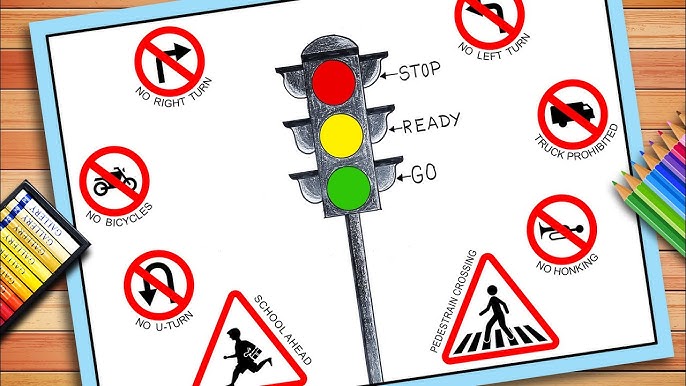Contact Us
RoadVision AI
Private Limited
Office No. 308 & 310, B Block
Ansal Chamber - 1, Bhikaji Cama Place,
Near Engineers India Limited (EIL) Bhawan, New Delhi - 110066
© 2024 | RoadVision AI | All rights reserved
Traffic signs are an essential part of road infrastructure, ensuring safety and smooth traffic movement. The IRC Code 63-1976, published by the Indian Roads Congress, establishes comprehensive standards for designing, installing, and maintaining traffic signs in India. This blog explores the significance of the IRC Code 63-1976, its provisions, and its role in creating an efficient road network.

The IRC Code 63-1976 is a technical document that provides guidelines for the standardization of traffic signs across Indian roads. It defines the design, dimensions, and placement of traffic signs to ensure uniformity and visibility. The code is crucial for enhancing road safety, minimizing confusion for drivers, and improving the overall efficiency of traffic management systems.
The code classifies traffic signs into three main categories:
The code specifies standardized shapes, colors, and symbols for each type of sign:
Proper placement is vital for the effectiveness of traffic signs. IRC Code 63-1976 provides guidelines on:
To ensure visibility during nighttime and adverse weather conditions, the code emphasizes the use of reflective materials or illumination. This enhances road safety, especially on highways and poorly lit roads.
The document highlights the importance of regular inspections and timely repairs. Faded or damaged signs can lead to confusion and accidents, making maintenance a critical aspect of traffic management.
By standardizing traffic signs, the code ensures uniformity across all Indian roads, making it easier for drivers to navigate, regardless of the region.
Clearly visible and well-placed signs reduce accidents by providing timely information and warnings to drivers.
The code provides a legal foundation for enforcing traffic rules and penalizing violations, contributing to better traffic discipline.
While IRC Code 63-1976 lays out comprehensive guidelines, certain challenges hinder its full implementation:
The IRC Code 63-1976 plays a pivotal role in shaping the traffic management system in India. By standardizing the design and placement of traffic signs, it not only enhances road safety but also simplifies navigation for drivers. Effective implementation of this code requires a collective effort from authorities, engineers, and the public to ensure a safer and more organized road network.
RoadVision AI is revolutionizing road infrastructure development and maintenance by leveraging cutting-edge AI in road safety and computer vision technology. Through advanced digital twin technology, the platform performs comprehensive road safety audits, enabling early detection of potholes, cracks, and other surface issues, ensuring timely repairs and improved road conditions. It also enhances traffic surveys by providing data-driven insights to address challenges like traffic congestion and optimize road usage. With a focus on building smart roads, RoadVision AI ensures full compliance with IRC Codes, empowering engineers and stakeholders to reduce costs, minimize risks, and improve the overall road safety and transportation experience.